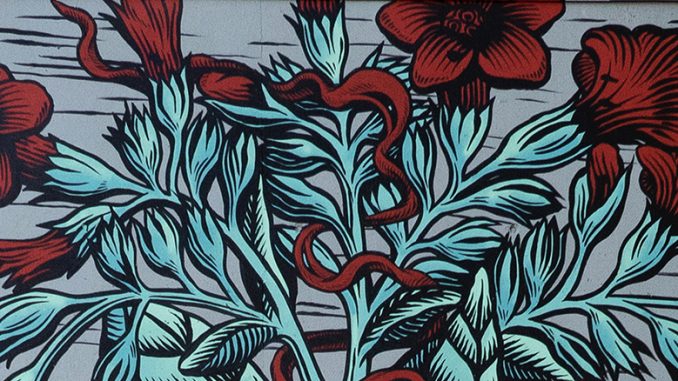
This new series celebrates the collaborative efforts between visual creatives and coffee roasters.
BY EMILY JOY MENESES
SPECIAL TO BARISTA MAGAZINE ONLINE
Cover photo courtesy of Kill Joy
It seems like art and coffee are a match made in heaven, beautifully interlaced and interdependent. For a lot of people, coffee fuels the creative process—and in many instances, art fuels the coffee world in return, granting it color and life. In working with cafés and roasteries around the world, we’ve encountered an expansive array of stunning, original artwork: visuals that tell the story of coffee through a profound, unspoken language.
We’ve launched this series to highlight the creative minds behind some of many notable works in the coffee world, particularly within the sector of café branding and design. Today we’re starting off with Kill Joy—an artist behind Cafecita Coffee’s striking visuals. Read on to learn more about Kill Joy and her creative process, and be sure to visit her website to explore more of her work.
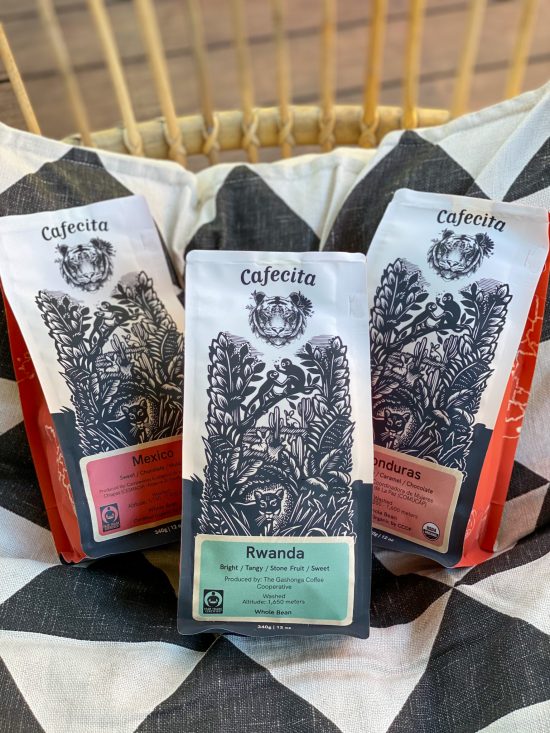
Emily: Hi, Joy! It’s so nice to finally meet you—I’ve heard such amazing things about you from the team at Cafecita. Can you first share with us some basic information about yourself: name, pronouns, where you’re located?
Kill Joy: Hi, Emily! Thank you for taking the time to talk to me. I really enjoyed the article you wrote featuring Cafecita. They are such a wonderful team. I’m so honored I got to work with them on their bag design. I sign my work as Kill Joy. Friends refer to me by my birth name, Joy. My pronouns are she/her. I’m located in Houston, Texas.
It seems like you’ve been making art for a long time. What first got you into creating art, and what is your main medium?
I’ve been very blessed that I’ve been able to continue making art since childhood into the present. I’ve always been interested in art and have found a lot of joy in living creatively. I’m so grateful that my parents are so supportive and that I’ve been able to pursue making art as a career. But to answer the question, I’d say that the curiosity of childhood got me into creating art; my family nurtured that spark throughout art school, and then being surrounded by the powerful graphic culture of Mexico for five years in my mid-twenties encouraged me to focus solely as an artist. I enjoy many mediums, but I would say printmaking is currently my main process.
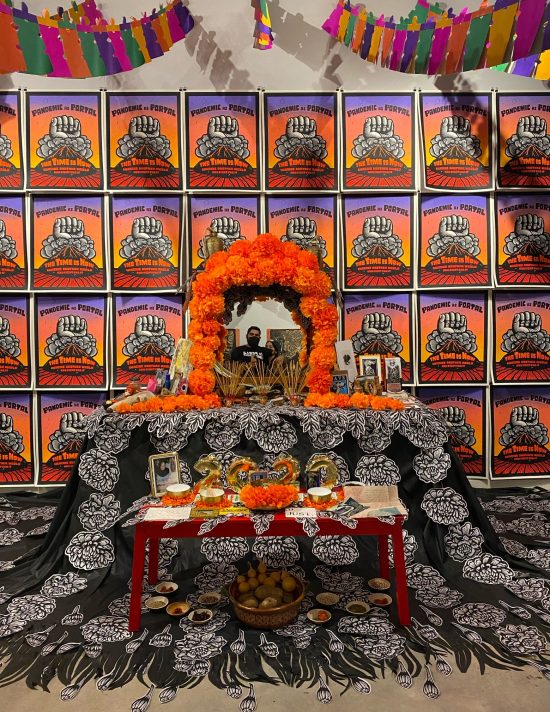
What influences you as a person and artist—what musicians, other artists, things in nature, etc. are you most inspired by?
My attention is all over the place. I’ve been listening to a lot of music in Spanish lately. I miss hearing it on the streets daily and I love how poetic and expressive the language is. It ranges from the classics like Mercedes Sosa to influences from reggaeton like Bad Bunny.
I love looking at print work: the carved woodblock/linocut line in particular. I’m always inspired by the TGP: Taller de Gráfica Popular from Mexico during the 1930s/1940s, who were a group of artists who focused on sociopolitical art.
I also love animated films. Hand-painted to stop motion, I can’t get enough of them. The Tale of the Princess Kaguya is watercolor-painted the whole way through and probably made me cry the most of any film I’ve seen.
And nature is always the greatest teacher and creator of all time. So getting a chance to go on a camping trip, even for just one night, I come back feeling refreshed and inspired to be creative like our original mother, Earth.
I see that, like myself, you’re a pinay—and much of your work is influenced by your identity as a Filipina. How would you say your cultural background shapes your work, and what message for both people in the Philippines and folks in the diaspora do you hope to convey through your work?
Yesss, Pinay Power! My cultural identity is influenced in large part in that I am not actually experiencing it in the Philippines. I feel such yearning to be closer to the land and the people that I have over-pour spilling into my work. It has been beautiful and validating to witness a cultural awakening among the Pilipinx diaspora and second generation like myself to explore their roots beyond the lasting legacy of colonization. Any message I have to share is that I hope we as a people continue to move closer to our center, a place that honors and remembers our ancestors, while also holding space for the lessons both imposed and embraced through colonizing countries.
Can you tell us a little bit about your artwork for Cafecita? When designing artwork for Cafecita, what were your main sources of inspiration?
Working with Cafecita was so much fun. It always helps the final results when there is trust in the artist and their execution of the project. In our planning stages, Cafecita had mentioned wanting a setting with plants and animals. I looked up flora and fauna of Mexico, Honduras, and Rwanda and created a narrative that had all three environments talking with one another. There’s the puma of the Americas in front of a frame overlooking the Rwanda grasslands all overlooked by monkeys, found on both continents, sharing a moment of connection. I wanted to honor all the women contributing to this project. My biggest inspiration was all the natural culture of their homelands.
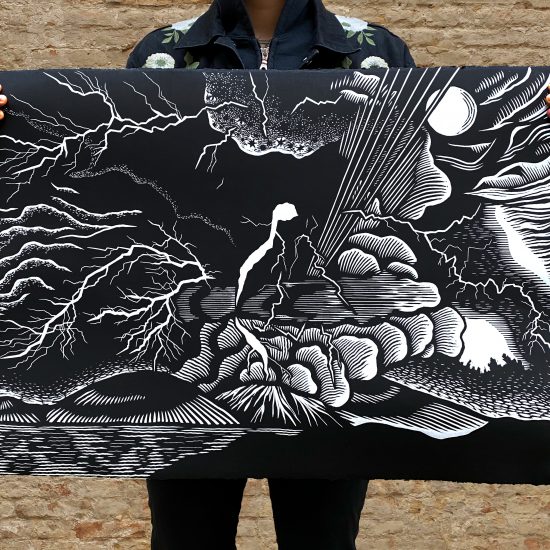
Do you have any advice for fellow creators? What helps you stay connected to your inner artist, and helps you stay true to yourself when creating?
Hopefully in your creative practice you always find joy and curiosity. Sometimes creative blocks happen, or movement of life is more demanding than usual, or making art can feel like a chore. For me, when I feel in a rut with art-making, I try to switch up what I’m doing. If I dwell too long in one medium, it can start to feel routine to me. So I like to explore a variety of ways to express myself so that I’m constantly learning or finding inspiration in what’s around me or in what other creative people are doing.
Anything else you’d like to share about yourself and your work?
Thank you for taking the time to spend with me, my work, and my thoughts about art. This past year has been the most challenging we as a global entity have experienced. It’s incredibly uplifting to share and explore connections in ways we did not previously think possible. I have been so inspired by our resilience and compassion for one another. I hope that if fatigue, grief, and rage wear us down that we are reminded to look to our community and to nature for guidance and strength.
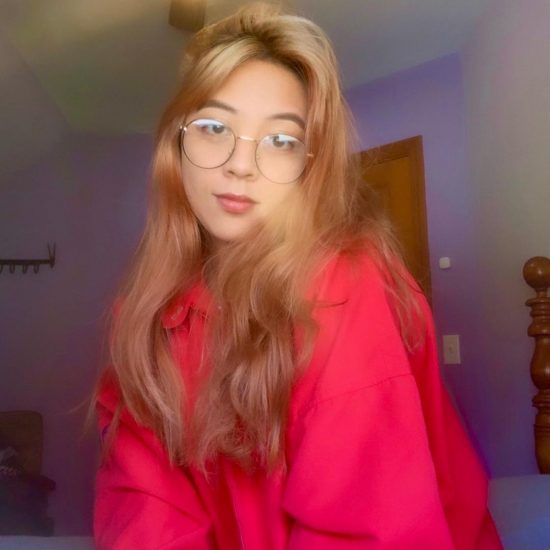
ABOUT THE AUTHOR
Based in Los Angeles, Emily Joy Meneses (she/her) is a writer and musician passionate about culture and collective care. You can regularly find her at Echo Park Lake, drinking a cortado and journaling about astrology, art, Animal Crossing, and her dreams. Explore her poetry, short stories, and soundscapes on her website.

